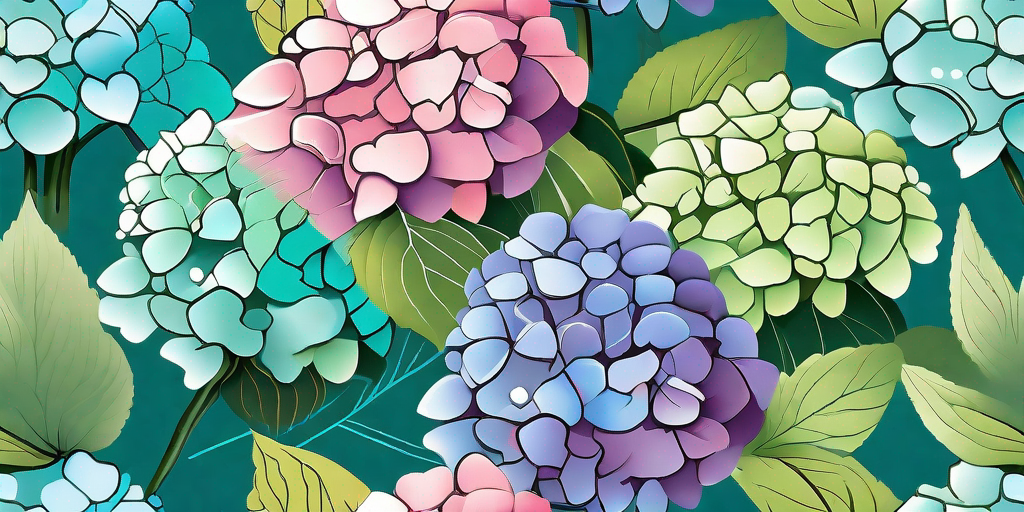
Hydrangeas, the botanical equivalent of a multi-layered cake, are a feast for the eyes. With their lush foliage and generous clusters of flowers, they are the showstoppers of any garden. But like any good cake, there's more to hydrangeas than meets the eye. Let's dive into the world of these perennial beauties and discover what makes them the gift that keeps on giving.
The History of Hydrangeas
Before we get our hands dirty with hydrangea care, let's take a quick stroll down memory lane. Hydrangeas have a rich history that dates back centuries. Originating from Asia and the Americas, these plants have been a part of human culture for a very long time.
Did you know that the name 'hydrangea' comes from the Greek words 'hydor' meaning water and 'angeion' meaning vessel? This is a nod to the plant's love for water and its seed capsules that resemble ancient water vessels. Talk about a plant with a backstory!
Types of Hydrangeas
Just like a box of assorted chocolates, hydrangeas come in a variety of shapes, sizes, and colors. Each type has its own charm and characteristics, making them a versatile choice for any garden.
Let's take a look at some of the most popular types:
- Bigleaf Hydrangeas: Also known as French hydrangeas, these are the most common type. They are beloved for their large, vibrant blooms that come in pink, blue, or purple.
- Panicle Hydrangeas: These hydrangeas are known for their cone-shaped flower clusters. They are hardy plants that can withstand colder climates.
- Smooth Hydrangeas: Known for their large, white, ball-shaped flower clusters, these hydrangeas are native to the United States.
- Oakleaf Hydrangeas: These hydrangeas stand out with their unique, oak-shaped leaves that turn a stunning red in the fall.
How to Grow Hydrangeas
Now that we've covered the basics, let's roll up our sleeves and get to the fun part - growing hydrangeas. Despite their grand appearance, hydrangeas are surprisingly easy to grow. With a little bit of care, you can have a garden full of these showstoppers in no time.
Here's a step-by-step guide on how to grow hydrangeas:
- Choose the Right Spot: Hydrangeas love the sun but they also need some shade, especially in the afternoon. A spot with morning sun and afternoon shade is ideal.
- Prepare the Soil: Hydrangeas prefer rich, well-drained soil. Add compost or organic matter to improve soil quality.
- Plant the Hydrangea: Dig a hole as deep as the root ball and twice as wide. Place the hydrangea in the hole, making sure the top of the root ball is level with the ground. Fill the hole with soil and water thoroughly.
- Water Regularly: Hydrangeas love water, so make sure to keep the soil moist, especially during dry periods.
- Prune Annually: Pruning helps to keep hydrangeas healthy and promotes more blooms. The best time to prune depends on the type of hydrangea.
Hydrangea FAQs
Got questions about hydrangeas? We've got answers! Here are some of the most frequently asked questions about these perennial beauties:
- Why are my hydrangea flowers turning brown?
- Hydrangeas can turn brown due to too much sun, not enough water, or disease. Make sure your hydrangeas are getting the right amount of sun and water, and check for signs of disease.
- Can I change the color of my hydrangeas?
- Yes, you can! The color of some hydrangeas, particularly bigleaf hydrangeas, can change based on the soil's pH level. Acidic soil (lower pH) will produce blue flowers, while alkaline soil (higher pH) will produce pink flowers.
- How often should I water my hydrangeas?
- Hydrangeas love water, but how often you should water them depends on your climate and soil. As a general rule, hydrangeas need to be watered once or twice a week, more often in hot, dry periods.
Conclusion
Hydrangeas are truly the perennial beauty that keeps on giving. With their stunning blooms, rich history, and easy care, they are a joy to have in any garden. So why not give hydrangeas a try? You might just find that they become your new favorite plant!
Remember, gardening is a journey, not a destination. So take your time, enjoy the process, and don't forget to stop and smell the hydrangeas!















